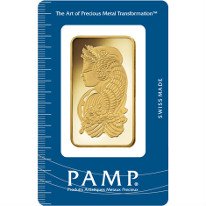Free Gold Price Widget For Your Website
This feature is only supported in the desktop browsers. Please visit this page in your desktop browser to retrieve the widget.
Share live gold prices with your website followers or on your blog, using our free gold price widget. To get started, please select one of the size dimensions from the drop-down menu below, and copy the code from the Widget Code text box and paste it into the desired position in your page. If you have any trouble, please contact us at support@jmbullion.com.
Widget Preview
Widget Code
Gold Prices in Chinese Yuan Renminbi
Although gold is commonly traded using U.S. Dollars, the yellow metal can be transacted using any currency. If you are buying or selling gold in China, for example, you would likely use the local currency, the Renminbi, for your transaction. The price of gold would likely be quoted in yuan per ounce, gram and kilo and could also potentially be quoted in other currencies such as dollars or euros.
The Chinese Yuan Renminbi is now part of the IMF’s Special Drawing Rights, or SDR. The acceptance of the yuan as a global reserve currency was a major step forward for China’s economic ambitions, and gave the nation a seat at the table among the world’s economic elite.
The Yuan and the Renminbi are often confused. The Renminbi is the name of the official currency of the People’s Republic of China. The yuan is simply a unit of Renminbi, much like the terms British Pound and Sterling are used.
The Renminbi was pegged to the U.S. Dollar until 2005. The currency was then allowed to float around a narrow, fixed base rate using a basket of currencies.
Gold Pricing in Renminbi
China is the world’s second largest economy and one of the largest emerging markets. Gold may be a popular investment in China, and the nation’s central bank has also been acquiring gold to add to its reserves.
The gold market in China can be driven by the same factors that fuel changes in the price of gold anywhere in the world. Some of the biggest potential influences on the price of gold are:
- Central bank activity
- Interest rates
- Currency markets
- Jewelry demand
- Geopolitics
- Inflation
- Overall investor sentiment
Chinese Gold Products
The Chinese Panda coin is one of the most popular coins produced in China, and it is a favorite with investors and collectors. The Chinese Panda Gold Coin is produced by the Chinese Mint and was first introduced in 1982 in both bullion and proof coin versions.
The Chinese Gold Panda coin is a sovereign coin series, similar to the American Gold Eagle or the Canadian Gold Maple Leaf. These gold coins come in several different weights. Each Chinese Gold Panda coin is considered good legal tender in China, with the coin’s face value determined by the coin’s weight.
The Chinese Gold Panda Coin uses a different design on its obverse from year to year, (with 2001 and 2002 being the exception) making the series somewhat unique. Beginning in 2016, these gold coins are now minted in and weighed in grams rather than troy ounces. The coin weights can vary from very small to quite large. An investor could buy a Chinese Gold Panda with a weight as small as a single gram or as large as a kilo.
As the Chinese economy continues to grow, the Chinese Yuan Renminbi may become a larger player in global currency markets. This currency could potentially gain in popularity, and could become a preferred reserve currency of choice.
Demand for gold in China may potentially rise as the nation looks to solidify its place as an economic powerhouse and as investors seek out gold for numerous reasons. Both the People’s Bank of China and Chinese investors could look to acquire more gold for its potential as a hedge against numerous economic and geopolitical issues such as inflation, declining currency values, loss of purchasing power and more.
If the Chinese currency does gain in popularity, it may be more widely used for transacting gold, crude oil and other commodities. China has also taken steps to become a more prominent player in the global gold trade. The Shanghai Gold Benchmark Price, or Shanghai Gold Fix, is a gold price derived from a twice-daily auction on trading days.
The Shanghai Gold Fix is designed to find a price where buyers and sellers reach an equilibrium, and the benchmark is quoted in Renminbi per gram, using 1 kilogram of gold in the form of standard ingots to be delivered to approved SGE vault facilities.
World Gold Prices
- Arab Emirates Gold Price
- Australia Gold Price
- Brazil Gold Price
- Canada Gold Price
- Chile Gold Price
- China Gold Price
- Czech Republic Gold Price
- Denmark Gold Price
- Europe Gold Price
- Hong Kong Gold Price
- Hungary Gold Price
- India Gold Price
- Indonesia Gold Price
- Israel Gold Price
- Japan Gold Price
- Malaysia Gold Price
- Mexico Gold Price
- New Zealand Gold Price
- Norway Gold Price
- Pakistan Gold Price
- Philippines Gold Price
- Poland Gold Price
- Russia Gold Price
- Singapore Gold Price
- South Africa Gold Price
- South Korea Gold Price
- Sweden Gold Price
- Switzerland Gold Price
- Taiwan Gold Price
- Thailand Gold Price
- Turkey Gold Price
- United Kingdom Gold Price
- United States Gold Price










